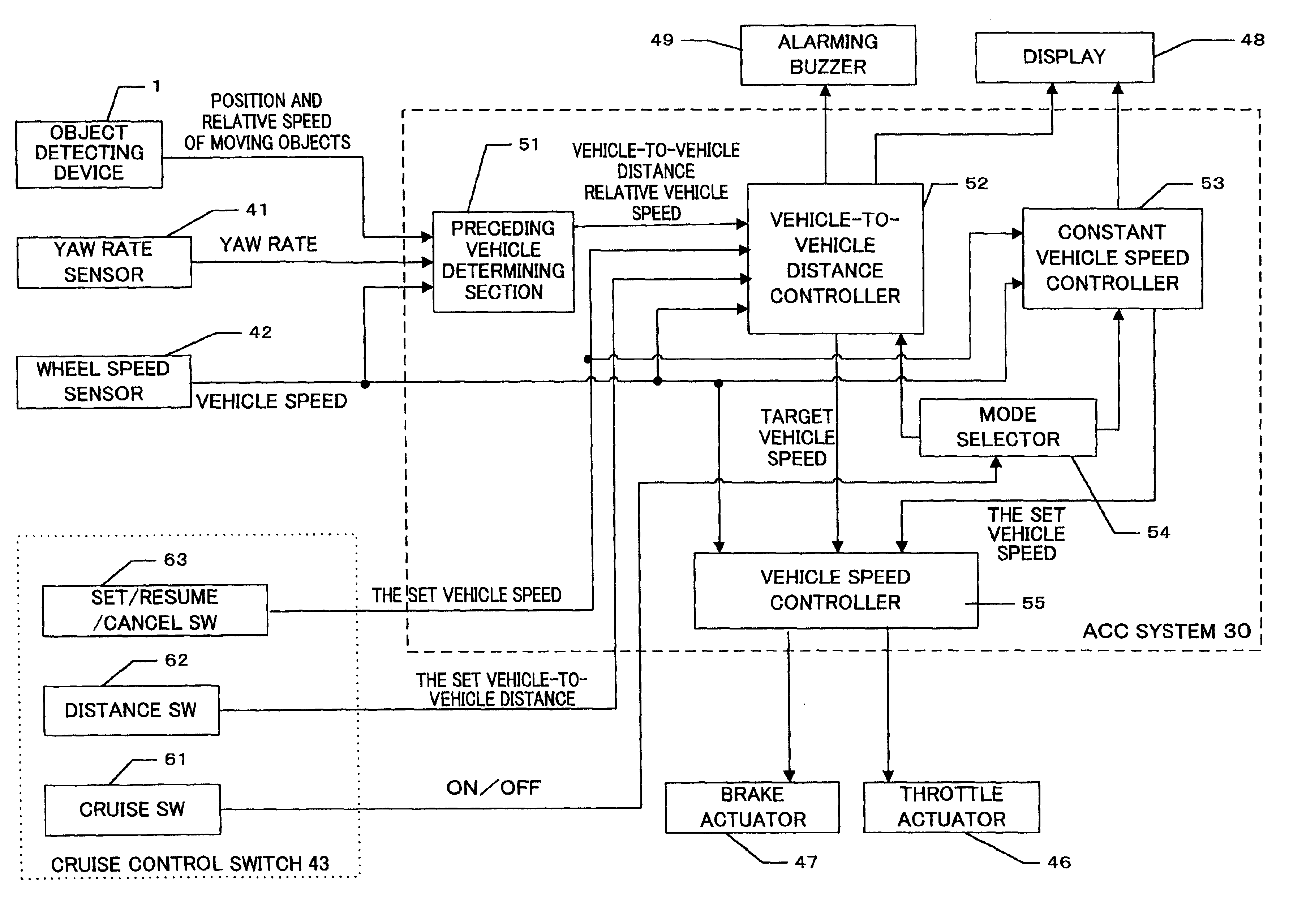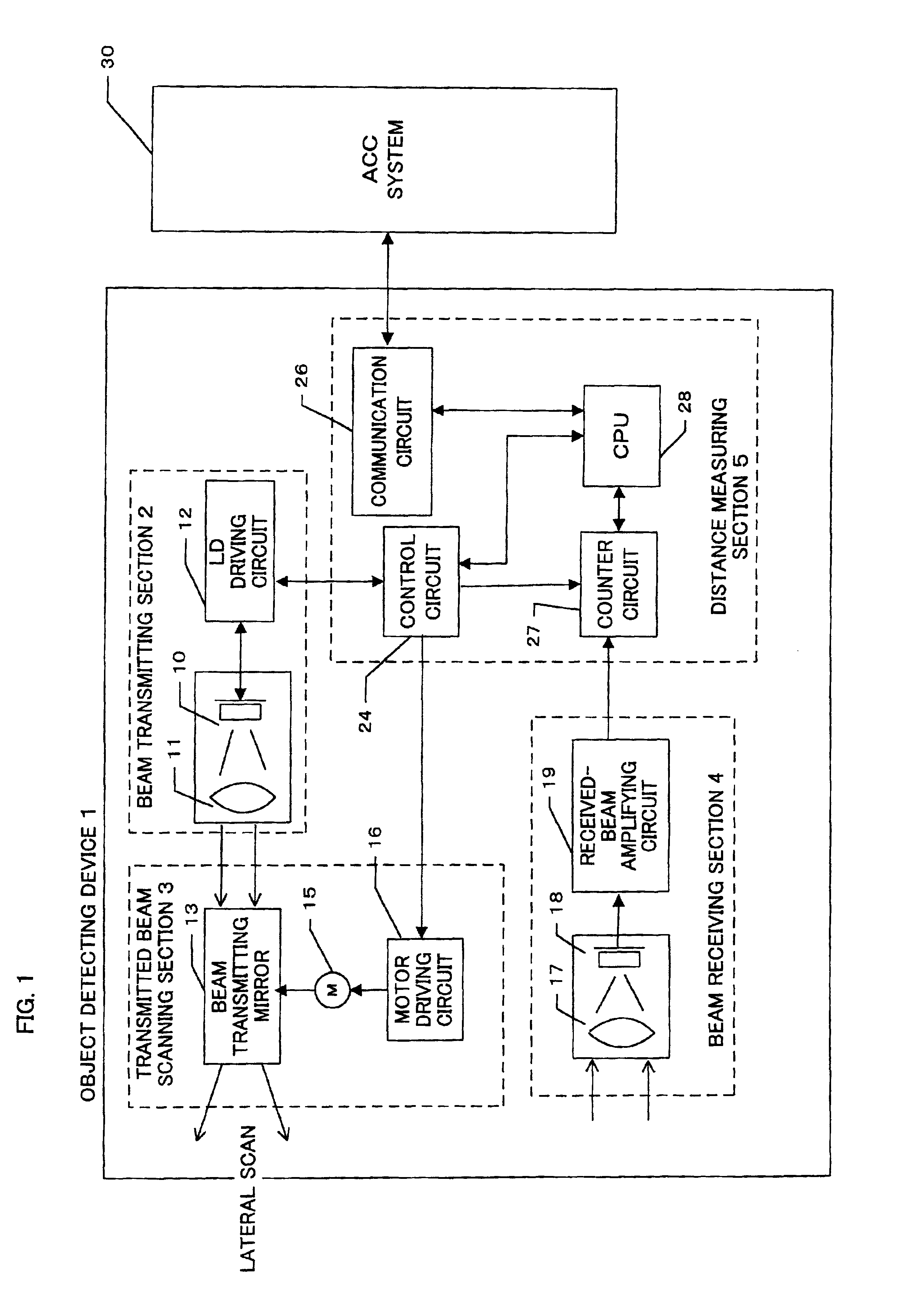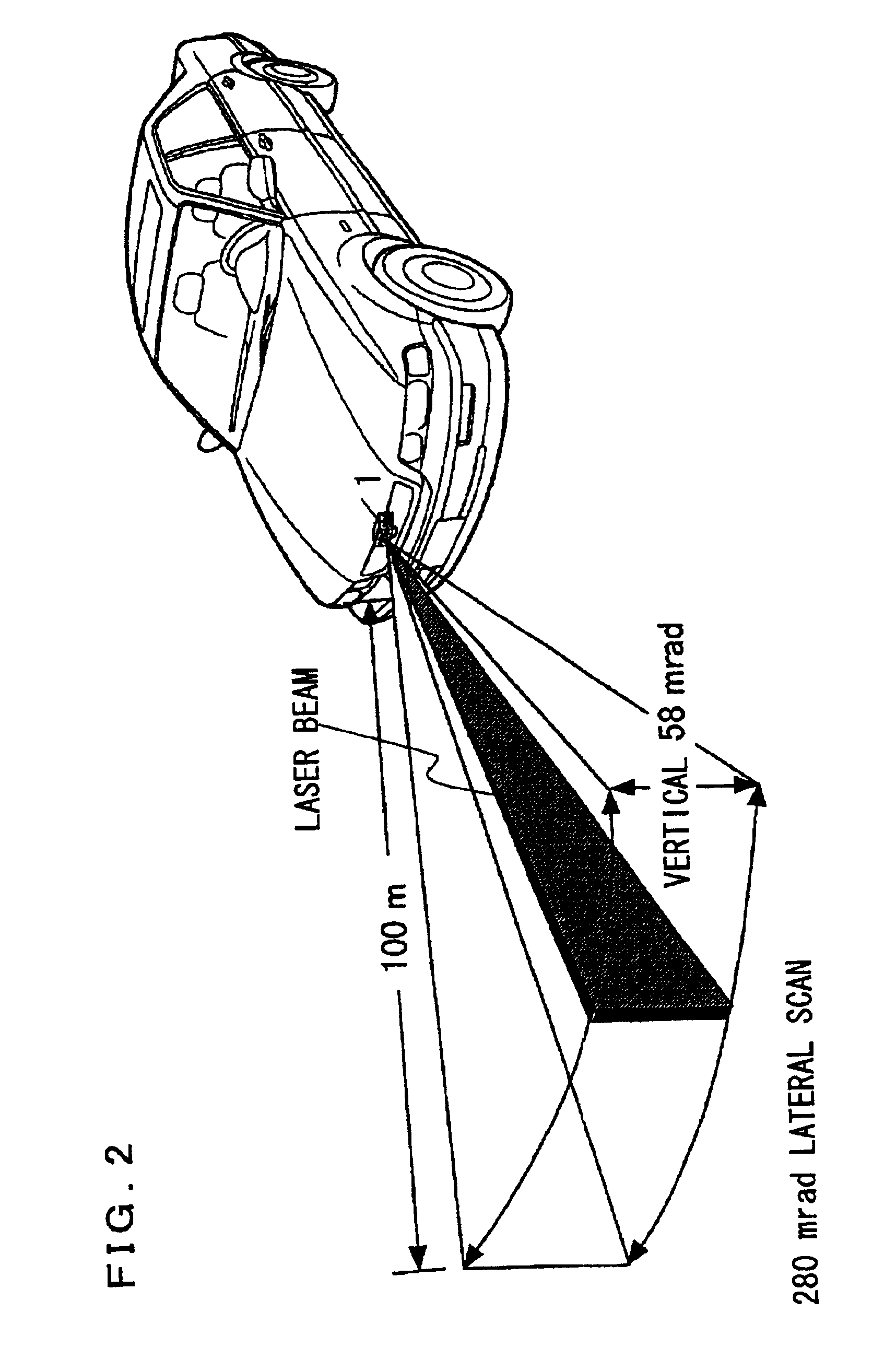Auto-cruise apparatus
a technology of auto-cruise and contact point, which is applied in the direction of process and machine control, pedestrian/occupant safety arrangement, instruments, etc., can solve the problems of unplanned acceleration, increased cost of providing a new contact point, and driver's inability to take deceleration action as expected, so as to prevent any unexpected acceleration
- Summary
- Abstract
- Description
- Claims
- Application Information
AI Technical Summary
Benefits of technology
Problems solved by technology
Method used
Image
Examples
first embodiment
[0092]FIG. 6 shows the switch. FIG. 6 (a) shows an ON / OFF toggle type of cruise switch in which the ON / OF is switched over for each depression. FIG. 6 (b) shows an integrated type of cruise switch in which the ON / OFF toggle switch and the distance switch are integrated. With this integrated type switch, the ON / OF is switched over for each depression of the ON side of the switch and the set vehicle-to-vehicle distance is switched over in such sequence as in “long”→“middle”→“short”→“long”→ . . . for each depression of the DISTANCE side of the switch. If the switch is turned to ON, the indication lamp 66 located on the left side of “ON” is lightened.
[0093]FIG. 6 (c) illustrates how the control states of the ACC system are transited in accordance with operations upon the switch in the embodiment where the ON / OFF toggle type of cruise control switch as shown in either (a) or (b) of FIG. 6 is provided with a mode switching function. When the switch is in the OFF state, the ACC system is b...
second embodiment
[0095]FIG. 7 shows the switch. FIG. 7 (a) shows an ON / OFF seesaw type of cruise switch in which the switch is turned to the ON state and the indication lamp 66 is lighted when the ON side is depressed and the switch is turned to the OFF state when the OFF side is depressed. FIG. 7 (b) illustrates how the control states of the ACC system are transited in accordance with the operation upon the switch in the embodiment where the ON / OFF seesaw type of cruise control switch as shown in FIG. 7 (a) is provided with a mode switching function. The difference of the FIG. 7 (b) embodiment from the FIG. 6 (c) embodiment is that there is a direct transition path between the ACC mode and the CC mode. Specifically, if the ON side is depressed for a predetermined time period or more when the system is in the ACC mode, the system is transited to the CC mode, and if the ON side is depressed for less than a predetermined time period when the system is in the CC mode, the system is transited to the ACC...
third embodiment
[0096]FIG. 8 shows the switch. FIG. 8 (a) shows a distance switch 62 for the driver to switch the set vehicle-to-vehicle distance to either “long”, “middle” or “short” distance. A vehicle-to-vehicle distance may be represented by a headway (which means a time interval from now to the time when the subject vehicle will reach the current position of the preceding vehicle if the subject vehicle travels at the current speed). The “long” headway corresponds to 2.5 seconds, “middle” to 2.1 seconds and “short” to 1.7 seconds respectively. For example, assuming that the speed of the subject vehicle is 80 km / h, the “long” headway corresponds to about 56 m, “middle” to about 47 m, and “short” to 38 m respectively. When the “LONG” side of the distance switch 62 is depressed, the set distance is increased by one stage. If the “SHORT” side is depressed, the set speed is decreased by one stage.
[0097]Any setting for the vehicle-to-vehicle distance may be possible. Any other number of the stages of...
PUM
 Login to View More
Login to View More Abstract
Description
Claims
Application Information
 Login to View More
Login to View More - R&D
- Intellectual Property
- Life Sciences
- Materials
- Tech Scout
- Unparalleled Data Quality
- Higher Quality Content
- 60% Fewer Hallucinations
Browse by: Latest US Patents, China's latest patents, Technical Efficacy Thesaurus, Application Domain, Technology Topic, Popular Technical Reports.
© 2025 PatSnap. All rights reserved.Legal|Privacy policy|Modern Slavery Act Transparency Statement|Sitemap|About US| Contact US: help@patsnap.com



